Legio X Fretensis
Legio X Fretensis: one of the Roman legions. Its name means "the legion of the sea straits".

This legion was founded in 41 or 40 by Julius Caesar's heir Octavian, who needed it to put an end to Sextus Pompeius' occupation of Sicily, which put the grain supply of Rome into peril. The new unit received its number as a reminder of Caesar's tenth legion - although the original legion served in the army of Octavian's fellow-triumvir and rival Mark Antony. These "double numbers" were not unusual and explains why several legionary numbers can be found twice in the Roman army.
According to the great German historian Theodor Mommsen (1817-1903), the new legion received its surname Fretensis ("of the sea straits") because it guarded the Straits of Messina and was active during the battles at Mylae and Naulochus. There is no reason to doubt this idea.
After Sextus Pompeius had been defeated, Octavian and Mark Antony started a war, which culminated in the naval battle off Actium (31), where Octavian defeated his opponent and won the supremacy in the Mediterranean world. From now on, he was known as the emperor Augustus.
After the victory at Actium, many Roman soldiers were pensioned off. Soldiers of the Tenth were sent to Cremona in northern Italy, which was now known as the Colonia Veneria - the latter element meaning "of the goddess Venus". (Venus was the mythological ancestress of the gens Iulia, the family of Octavian/Augustus). Other soldiers may have been sent to Brixia, modern Brescia, and Capua. Patras was colonized by veterans of X Fretensis and XII Fulminata.
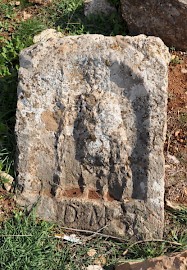
The Tenth was briefly sent to the Balkans, and we find it again - after a transfer to the Near East at an unknown date - in Syria in 6 CE. At least several subunits of X Fretensis were stationed at Cyrrhus, where they guarded the route from the Euphrates to Alexandria near Issus. According to the Roman historian Tacitus, the unit was in Cyrrhus in the year 18.note
It is probable that the men had already marched from the Balkans to the east when Augustus' son-in-law Tiberius negotiated with the Parthians in 20 BCE and obtained the eagle standards that had been captured at Carrhae in 53 BCE.
The governor of Syria, Publius Quinctilius Varus, used three of the four Syrian legions to suppress the rebellions of the Jewish messianic claimants Judas, Simon, and Athronges after the death of king Herod the Great in 4 BCE. It is likely that X Fretensis was among them, but we are not certain because we do not know the date of the transfer from the Balkans to Syria.
Its presence in Syria in 6, however, is a certainty. Our unit, together with III Gallica, VI Ferrata, and XII Fulminata, must have taken part in the campaign led by the famous governor of Syria, Publius Sulpicius Quirinius, to Judaea in 6, which had become restless after the emperor Augustus had exiled Herod Archelaus, added his realm to the Roman empire, and organized the census so well-known from the Gospel of Luke.
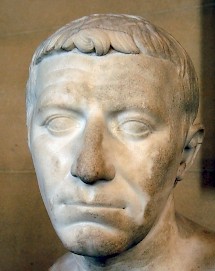
For almost half a century we have no evidence for the whereabouts and actions of X Fretensis, except for the fact that veterans were deduced to a new colonia at Ptolemais (Acre).
During the reign of Nero, the Roman commander Gnaeus Domitius Corbulo launched a successful campaign in the vassal kingdom Armenia, using III Gallica, VI Ferrata and X Fretensis. The capitals Artaxata (south of modern Yerevan) and Tigranocerta were captured (in 58 and 59) and he gave the Armenians a new, pro-Roman king, Tigranes (a great-grandson of the Jewish king Herod the Great). However, the Parthians put another king on the Armenian throne, Tiridates, the brother of their king Vologases I.
A retaliatory campaign was organized by Lucius Caesennius Paetus, the governor of Cappadocia. He used XII Fulminata and IIII Scythica. However, the Parthians forced them into surrender at Rhandeia (winter 62/63). Later, Corbulo and his three legions were able to turn the tables, and ordered Tiridates to receive his crown for the second time from the Roman emperor Nero.
From 67 onward, X Fretensis fought in the war against the Jews. It was commanded by Marcus Ulpius Trajanus, the father of the future emperor. The supreme commander of the Roman forces in Judaea was general Vespasian, who was to become emperor during the civil war that broke out after the suicide of Nero in 68.
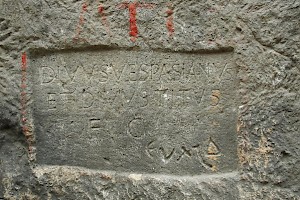
After the first year of war, X Fretensis and V Macedonica had their winter camp at Caesarea (67/68), and after the capture of Gamala, the Tenth moved to Scythopolis (modern Beth-Shean). In the summer of 68, X Fretensis was active in the valley of the river Jordan and destroyed the monastery of Qumran, where the Dead Sea-scrolls have been found. Its winter camp was at Jericho. After mid-69, its commander may have been Terentius Rufus, who is mentioned as "commander of the troops" by Flavius Josephus.
In 70, X Fretensis took part in the siege of Jerusalem (more). After the capture, prisoners of war were sent to Seleucia, where the legionaries forced them to cut the Canal of Titus. Although this was hard labor, these people were lucky that they were not sent to Rome to build the Colosseum.
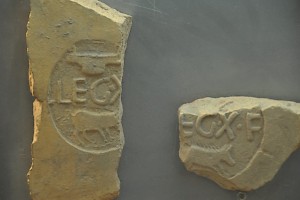
After the fall of Jerusalem, Judaea remained unquiet. To show the world that Rome was, in spite of the length of the Jewish War and the civil war of 69, still a superpower, governor Flavius Silva started to besiege the citadel at Masada (more). Although this was, from a military point of view, a rather pointless operation (a small garrison in the neighborhood would be sufficient to deprive the people on the rock from support), it served Roman public relations. No mountain was too high for the Roman army. To the Tenth, it meant a rehabilitation after the disgraceful loss of its eagle.
X Fretensis was to stay in Judaea for more than a century and a half. Jerusalem became its new base, and several unremarkable archaeological finds in the holy city - bricks and tiles with the name of emblem of the legion - prove its presence. Unfortunately, we do not know the precise location of its fortress. The emblem of the legion, a boar or pig, was visible on several places and must have been intended to humiliate the Jewish population.
The legion no longer had a commander of its own, but was led by the provincial governor, who had the rank of procurator.
Like the other legions in the Levant, X Fretensis served during Trajan's ill-fated campaign against the Parthian empire (115-117). Several officers were decorated.
 Masada, Coin of Agrippa II, with a mark of X Fretensis |
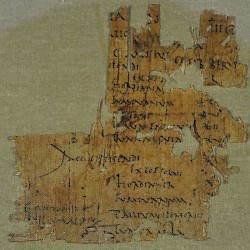 Masada, Payslip of soldiers of X Fretensis |
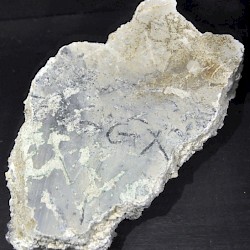 Masada, Graffito by a soldier of X Fretensis |
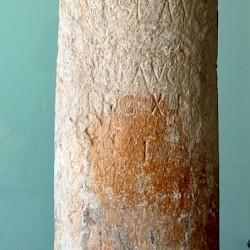 Jerusalem, Milestone mentioning X Fretensis |
During the reign of Trajan's successor Hadrian, the legion was involved in the war against the messianic leader Simon ben Kosiba (more), one of the greatest disasters that ever befell the Roman empire. The Tenth had to evacuate its fortress at Jerusalem, where the Jews restored the proper cult in the Temple. This was duly commemorated: many Jewish coins show the restored sanctuary and imply the Roman loss of their base.

Perhaps our unit took part in the siege of Betar, the last stand of the rebels. When victory was finally achieved in the first weeks of 136, soldiers of X Fretensis made a dedication to the god Neptune, one of the emblems of the legion. To prevent future Jewish wars, the Sixth legion Ferrata was transferred to Palestine. It stayed in Caparcotna in Galilee. From now on, two legions were to occupy the reorganized province.
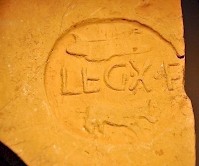
During the reign of Marcus Aurelius, a subunit of the Tenth fought in the Marcomannic war. Perhaps the soldiers of this expeditionary force built the altar that was found in northern Romania, but their presence in Dacia Porolissensis can also be dated to other moments.
After the murder of the emperor Publius Helvius Pertinax in 193, X Fretensis sided with general Pescennius Niger, who proclaimed himself emperor. However, he was defeated by Lucius Septimius Severus. Almost immediately, civil war broke out between the Jews and Samarians in Palestine, and it seems that the Tenth came to blows with VI Ferrata. However, we cannot be certain about this interpretation of the events.
The tenth legion was still in Jerusalem during the reign of Caracalla (211-217), but in the course of the third century, it was transferred to Aela or Ailana (modern Akaba).
From now on, the legion begins to disappear from our sources. A subunit of horsemen was active in the west during the age of the independent Gallic empire (260-274), and we know that X Fretensis was at some stage awarded the title Pia Fidelis - but that is all we know. The unit is mentioned as garrison of Aela in Notitia Dignitatum, which means that it was still there in about 400. Perhaps a subunit was present during the siege of Amida in 359, if the Decimani Fortenses mentioned by Ammianus Marcellinus may be read as Decimani Fretenses.note
The emblems of this legion were the bull (the common symbol of any legion created by Julius Caesar), a warship, a dolphin, the god Neptune, and a boar.
Literature
- E. Dabrowa, Legio X Fretensis. A Prosopographical Study of its Officers (I-III C AD) (1993)
- E. Dabrowa, "Legio X Fretensis", in: Yann Le Bohec, Les légions de Rome sous le Haut-Empire (2000 Lyon) 317-325
- H. Geva, "The Camp of the Tenth Legion in Jerusalem: an Archaeological Reconsideration," in: Israel Exploration Journal 34 (1984) 239-254
- M. Gichon, "The siege of Masada", in: Yann Le Bohec, Les légions de Rome sous le Haut-Empire (2000 Lyon) 541-554
- Y. Meshorer, "Two Finds from the Roman Tenth Legion", in: Israel Museum Journal 3 (1984), 41-45
- article by Emil Ritterling.